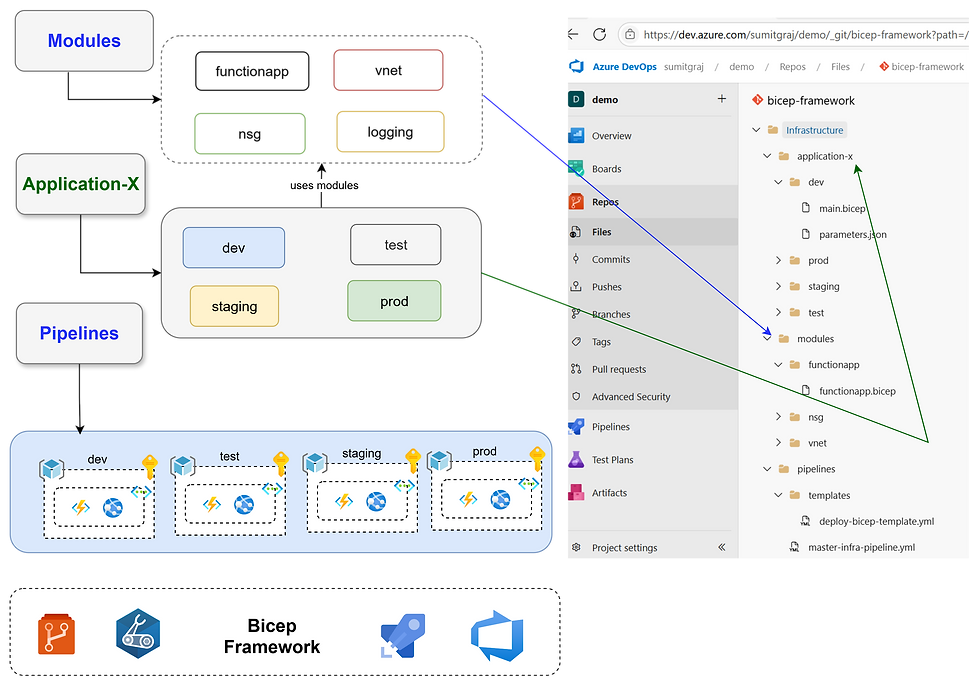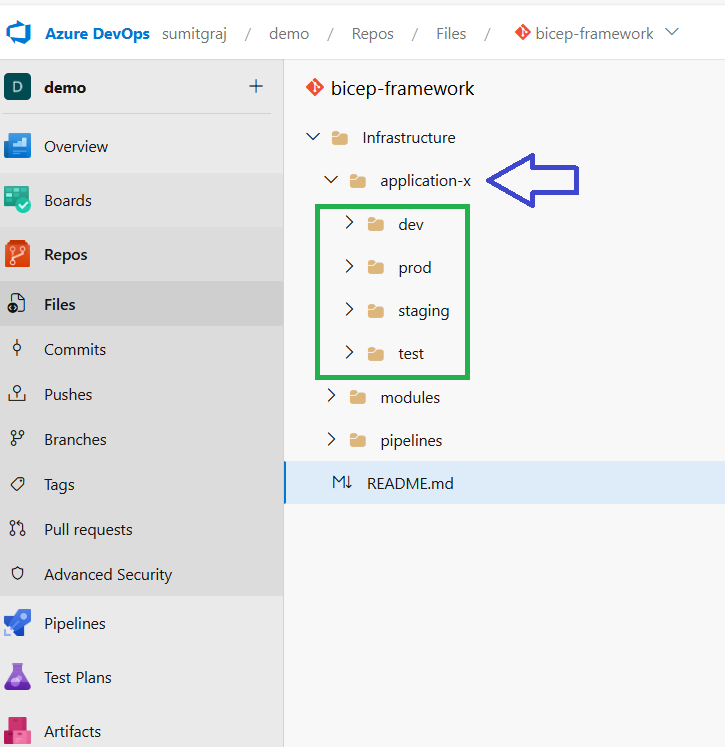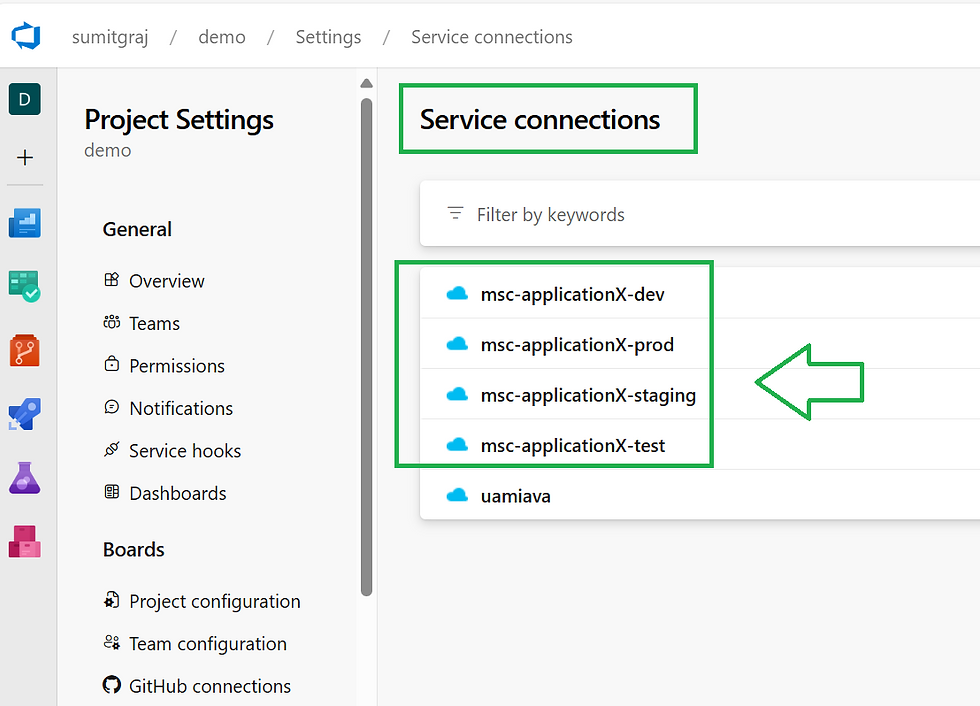Building Enterprise-Grade Azure Infrastructure: Complete Multi-Environment Bicep Framework with Production Approval Gates
- Sumit Raj

- Aug 27
- 5 min read
Updated: Sep 5
Overview
When I started building infrastructure for our application-x project, I faced a common challenge that many developers encounter: How do you manage infrastructure across scalable multiple environments (dev, test, staging, production) while ensuring consistency, security, and scalability?
After trying various approaches and dealing with the pain of managing separate templates for each environment, I built a comprehensive Bicep framework that solved these problems. Here's exactly how I did it and why this approach works for enterprise applications.
The Challenge: Managing Scalable Multi-Environment Infrastructure
The Problems I Needed to Solve:
Deploy identical infrastructure across 4 environments
Maintain environment-specific configurations without code duplication
Implement proper approval gates for production deployments
Keep the solution maintainable and scalable for team collaboration
Follow enterprise naming conventions and security standards
The Traditional Approach (And Why It Fails)
Most teams start by copying and pasting infrastructure templates for each environment. This leads to:
Configuration drift between environments
Maintenance nightmares when updating infrastructure
Security gaps due to inconsistent configurations
Deployment errors from manual processes
The Solution: Modular Bicep + Pipeline Framework
Instead of managing separate templates for each environment, I created a modular approach that treats infrastructure as a product, not just code.

Building the Modular Bicep Framework
I broke down the infrastructure into three core reusable modules:
1. Virtual Network Module (modules/vnet/vnet.bicep)
Configurable subnets for different application tiers
Environment-specific CIDR blocks to prevent conflicts
Consistent naming convention: <appname>-<env>-<suffix>
Automatic subnet creation for web, app, and data tiers
2. Network Security Group Module (modules/nsg/nsg.bicep)
Predefined security rules for web applications
Environment-specific access restrictions
Automatic association with virtual network subnets
Built-in rules for HTTP/HTTPS and SSH access
3. Function App Module (modules/functionapp/functionapp.bicep)
Complete serverless setup with all dependencies
Storage account, App Service plan, and Application Insights
Auto-scaling configuration based on environment
Environment-specific SKUs (Consumption for dev, Premium for prod)
Multi-Environment Configuration Strategy
Instead of duplicating code, I created a smart parameter-driven approach that uses the same templates with different configurations.
Environment Structure:

Environment-Specific Configurations:
Each environment uses the same Bicep templates but with different parameter files, ensuring consistency while allowing for environment-specific optimizations.

Building the Deployment Pipeline
The real magic happens in the Azure DevOps pipeline. Here's how I structured the automated deployment process:
Pipeline Flow:

Key Features I Implemented:
1. Branch-Based Deployment Logic
feature branch triggers deployment to dev environment only
develop branch triggers deployment to dev and test environment only
main branch triggers the full pipeline through production
2. Production Approval Gates
3. Reusable Deployment Template
Bicep Modules
Real-World Implementation Challenges & Solutions
Challenge 1: Naming Convention Consistency
Problem: Different teams using inconsistent naming patterns across resources
Solution: Implemented a strict <appname>-<environment>-<suffix> convention across all resources using Bicep parameters. This ensures every resource is easily identifiable and follows enterprise standards.

Challenge 2: Environment Isolation
Problem: Risk of accidental cross-environment deployments and security breaches
Solution:
Separate Azure service connections for each environment
Dedicated resource groups with environment-specific permissions
Network isolation using different CIDR blocks
Environment-specific tags for cost tracking and governance

Challenge 3: Production Safety
Problem: Need human oversight for production changes without slowing down development
Solution:
Automatic deployments for dev, test, and staging
Manual approval gates for production

Challenge 4: Configuration Management
Problem: Managing environment-specific parameters without code duplication
Solution:
Separate parameter files for each environment
Template validation to ensure parameter consistency
Environment-specific validation rules

Results & Benefits Achieved
Deployment Speed & Efficiency
⚡ Dev deployment: ~5 minutes from code commit
⚡ Full pipeline (dev to production): ~25 minutes total
⚡ Zero manual intervention except production approval
⚡ 90% reduction in deployment time compared to manual process
Consistency & Reliability
🎯 100% identical infrastructure across all environments
🎯 Automated validation prevents configuration drift
🎯 Single source of truth for infrastructure definitions
🎯 Zero deployment failures due to environmental differences
Security & Compliance
🔒 Complete environment isolation with separate subscriptions
🔒 Production approval gates with audit trails
🔒 What-if analysis prevents unexpected changes
🔒 Automated resource validation and security scanning
Maintainability & Scalability
🔧 Single module update propagates to all environments
🔧 Parameter-driven configuration eliminates code duplication
🔧 Clear separation of concerns for team collaboration
🔧 Easy to onboard new environments or applications
Environment-Specific Parameters Example:

Pipeline Template Example:

Lessons Learned & Best Practices
What You Should Do:
✅ Start with clear naming conventions - Define these early and stick to them religiously
✅ Use modular Bicep templates from day one - Don't try to refactor later, it's much harder
✅ Implement approval gates for production - Even if it seems unnecessary initially
✅ Separate parameter files per environment - Avoid the temptation to use conditional logic
✅ Tag everything consistently - Your future self (and your finance team) will thank you
What You Should Avoid:
❌ Don't copy-paste templates for each environment - This leads to maintenance hell
❌ Don't skip validation steps - The extra time is worth the safety
❌ Don't use the same service connection for all environments - Separate them for security
❌ Don't deploy to production without approval - Automate everything except the final gate
❌ Don't ignore monitoring and alerting - Build observability into your infrastructure
Pro Tips from Implementation:
💡 Use consistent resource group naming - Pattern like rg-<appname>-<env>
💡 Implement proper error handling in pipelines - Make failures actionable
💡 Document your parameter files thoroughly - Include comments explaining choices
💡 Test your approval process before going live - Make sure notifications work
💡 Monitor deployment times and optimize - Look for bottlenecks in your pipeline
What's Next: Future Enhancements
This framework is now the foundation for our infrastructure, but I'm continuously improving it:
Planned Improvements:
Automated testing for Bicep templates using Pester and Azure Resource Manager Template Toolkit
Cost monitoring per environment with automated alerts and budgets
Infrastructure drift detection to catch manual changes
Self-service deployment for feature branches to enable developer testing
Integration with Azure Policy for governance and compliance
Automated security scanning of infrastructure configurations
Scaling the Framework:
Cross-region deployment capabilities
Disaster recovery automation
Blue-green deployment patterns for zero-downtime updates
The Result: Infrastructure as a Product
This framework now powers our application-x infrastructure across all environments. We've deployed it 50+ times with zero production incidents and reduced deployment time from hours to minutes.
The key insight was thinking beyond just "Infrastructure as Code" to "Infrastructure as a Product" - building something that's maintainable, scalable, and safe for enterprise use.
Key Metrics After Implementation:
95% reduction in deployment time
100% elimination of environment drift
Zero production deployment failures
75% reduction in infrastructure-related support tickets
Conclusion
Building this scalable multi-environment infrastructure pipeline transformed how our team approaches infrastructure management. The combination of modular Bicep templates, automated pipelines, and proper approval gates creates a system that's both efficient and secure.
The framework proves that you can have the best of both worlds: rapid deployment for development environments and careful controls for production, all while maintaining consistency and reducing maintenance overhead.
If you're struggling with multi-environment infrastructure management, I highly recommend taking a similar approach. Start with the modular templates, add the automation gradually, and always prioritize production safety.
Want to implement something similar in your organization? I'd love to hear about your use case and help you adapt this framework. Connect with me on LinkedIn or drop a comment below!






Comments